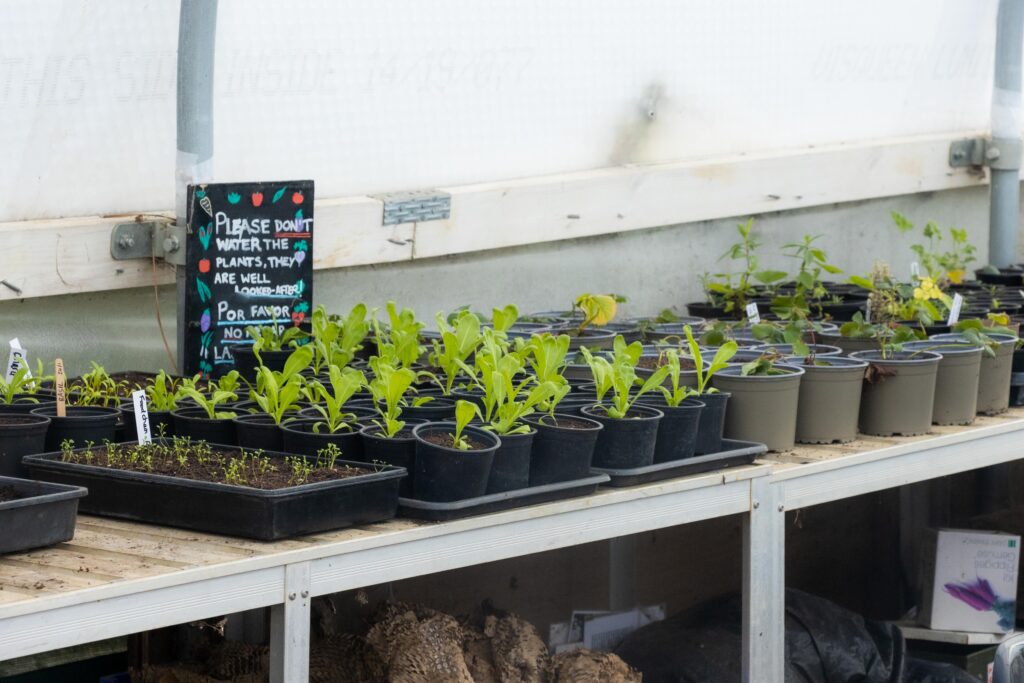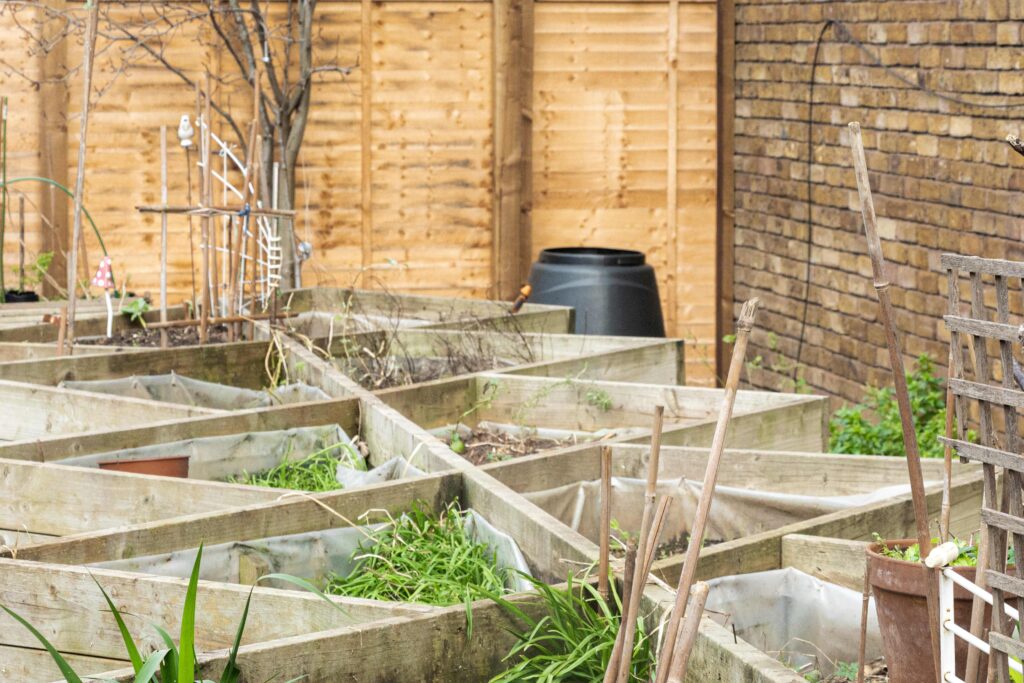Have you ever planted? Do you love gardening? Nowadays, we can see community gardens roots everywhere in London, unlike the first function of ensuring food supply during war time, community gardens have turned into a place that embraces diversity, sustainability, and shared growth with distinctive features in a fast-paced metropolis like London, an international centre full of skyscrapers and people pressed for time on a journey. Let’s visit some community garden hidden from the concrete jungle you might haven’t heard of before!
1. Planting anywhere: Nomadic Community Garde
The Nomadic Community Garden, situated in Shoreditch, offers more than just a typical green space for social interaction, cross-cultural exchange, and biodiversity. It has also developed a replicable model of small-scale gardening, trying to transcend physical boundaries and turn abandoned spaces into dynamic centres of life with its movable art pieces, modular furniture, and adjustable mobile vegetable beds.
The garden was designed to create a “third place,” outside of homes and workplaces where people can come together, learn, and grow. This place carries over the vivid and cosmopolitan atmosphere of an East London Street, with handcrafted items, repurposed furniture, and even vintage caravans situated in harmony among raised vegetable patches. To enjoy the time here, you could simply get a hot cup of coffee at a tiny coffee cafe while contemplating the serenity of a flourishing garden.
2. Inclusive community in East London: Black Rootz
Black Rootz, the first intergenerational, Black-led growing initiative in the UK, founded 2019 and is based in Wolves Lane, an area that values diversity. It promotes gardening and aims to strengthen ties between generations and create an environment where knowledge can be easily transferred from elder to younger generations. While actively introducing the younger members to the wonders of the outdoors, the elders here share their knowledge of agriculture. As they cultivate a range of fruits and vegetables, some of which are new to British soil, such as sweet potatoes, exotic squashes, and tomatillos, the significance of sharing growing techniques becomes crucial.

Image | taken by Cheryl Ng
In Black Rootz, there is a lengthy greenhouse packed with a variety of commercially grown food and flowers. In addition, there is a bit of woodland and parts for fruit trees and appealing flowers in the garden, and the on-site café serves tasty dishes made from hyper-local goods.
Website: www.ubele.org/our-work/black-rootz
3. Therapeutic Meadows: Healing Gardens at Battersea Park
Does planting help wellness? Four community gardens in Battersea Park use Social and Therapeutic Horticulture to help persons with health, social, and educational needs. Trained horticultural therapists work enthusiastically with people and plants, using nature as an incentive to improve mental and physical wellness, interaction, and cognitive abilities.
The community garden found in Battersea Park welcomes everyone, regardless of whether they are referred by Social Services, support workers, GPs, or anyone else. The area allows for the discussion and understanding of individual needs, leading to therapeutic plans that are tailored and fit for each participant.
Website: www.thrive.org.uk/how-we-help/regional-centres-and-programmes/london#
4. The heart of the city: Calthorpe Community Garden
In the middle of the bustle of one of London’s busiest neighbourhoods, Kings’ Cross, the Calthorpe inner-city community garden and centre is a sanctuary committed to improving the mental and physical health of the residents of this dynamic neighbourhood.

Image | taken by Cheryl Ng
Calthorpe Community Garden is a community garden with all the amenities one could want. Beyond the local green space that grows plants, it also serves as a nurturing ground for the mental and physical health of its citizens, creating an evolving hub of encouragement, development, and engagement in the heart of the city.
Website: www.calthorpecommunitygarden.org.uk
5. An award-winning upcycled community space: The UP Garden
The Up Garden, which was formerly an abandoned laundry in Forest Gate, has been transformed into a colourful sanctuary that highlights societal resiliency and change. Here, locals have banded together to revitalise abandoned areas and set up a venue for cross-generational interaction. Situated next to the wildflower playfield, this award-winning repurposed communal space promotes creative, unstructured play with colourful tyres, tree slices, decking planks, and wooden blocks. There’s also a digging area with mud kitchenware to further enhance the experience. Visitors can also play using the foosball table and chessboard.
This restored area is evidence of the community’s inventiveness and tenacity. It serves as a live reminder that even abandoned spaces may be revitalised to become thriving hubs for development and community.
Website: www.theupgarden.org
Which community garden is your favourite? Do you think that having a community garden is crucial for the residents who live locally?
